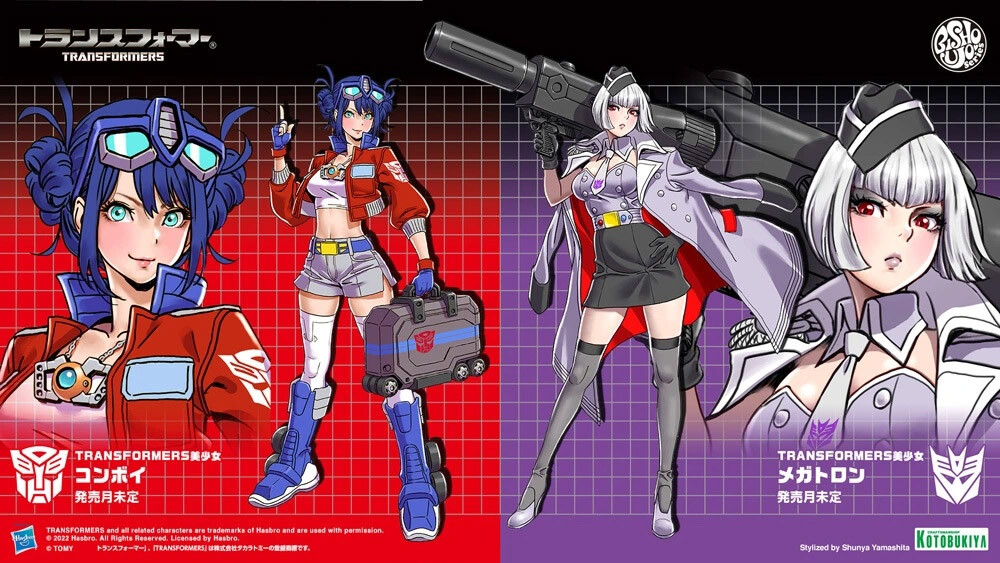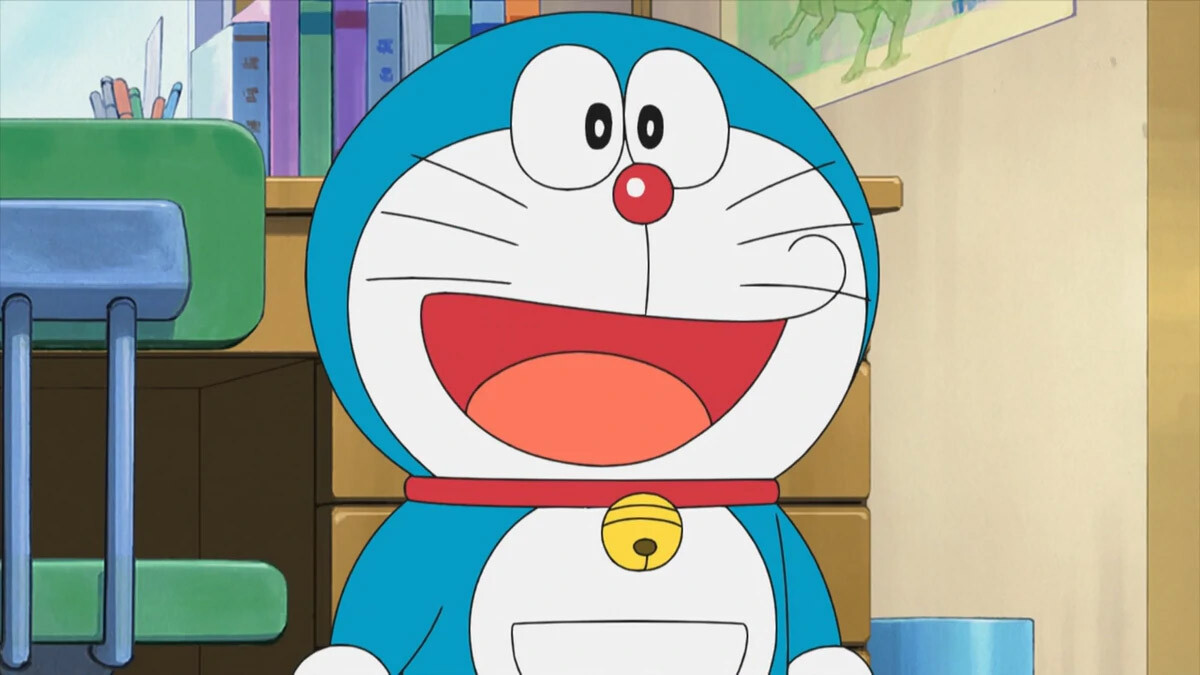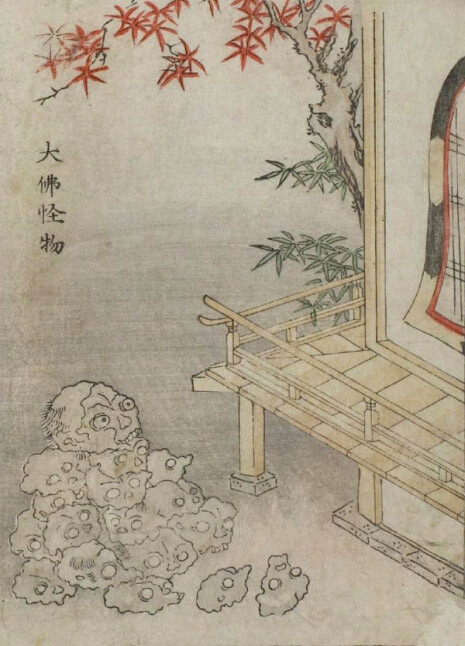Cracked Goes To Japan: 4 Reasons Why Japan Loves Anthropomorphizing Things

They are everywhere in Japan. They look human, but they don’t start out that way. Thankfully “they” are just drawings of cute guys and gals, so they’re not really hurting anyone besides giving the occasional person blue balls and/or panty headaches. But they’re also more than your run-of-the-mill thirst-trap art. They’re gijinka, which can be translated as “personification,” “anthropomorphism,” or simply “What if you drew stuff that wasn’t human … as human?!” Cars, weapons, animals, planets, monsters, and even abstract ideas are given human form through the process of gijinka, raising an important question: So … is this porn? This is very specific porn, right? Let’s find out ...
Why Objectify Humans When You Can Humanize Objects and So Much More?
Whether gijinka is porn or not is kind of a meaningless question because the first rule of the internet is: “Everything is porn to someone. Yup, even that. That too. And that. Please stop screaming. It’s making someone very horny.” That being said, though usually clothed, a lot of Japan’s anthropomorphic art does tend to lean towards the sexy/suggestive side. When the Japanese World Flags project launched a website featuring the personifications of national flags in samurai outfits, they seem to have mistakenly just drawn a bunch of human versions of the Sahara, considering how hot and dehydrated they were making people. Here is Canada, represented by Samurai Keanu.

His profile says he loves skating and Tim Horton's donuts and is as sweet as maple syrup, but you wouldn’t want to take him on in a fight. And below is the guy Keanu is always on top of. Geographically speaking, that is. Although, between the two, the human USA does not exactly emanate dom energy …

Depicting flags and countries as people is of course nothing new. Hell, the US beat World Flags to that by a few centuries with Uncle Sam. In fact, one of the best examples of gijinka originated outside Japan, though it was heavily influenced by it.
Earth-chan is a blue-and-green-haired anime-girl representation of our planet, with a flat chest as a joke on flat-earthers (then again, so are the flat-earthers themselves.) She’s frequently shown sick and beaten-up because of humanity’s disregard for the environment. But what this piece of propaganda never shows you are the 5-10 guys making mad bank off Earth-chan’s pain so, you know, remember that there’re always two equally valid sides to every story.
We invite you to enjoy her in the greatest art form there is: the meme compilation video.
Even more out-there stuff like the Cells at Work! Manga and anime, which star anthropomorphized red blood and white blood cells, isn’t a 100% original Japanese idea. And you might think that I’m talking about the 2001 Chris Rock movie Osmosis Jones but, nope, I actually mean the 1987 French series Once Upon a Time... Life. Then again, that one was technically a Japanese co-production so that’s maybe half a point?
But while Japan can’t always be the first with all gijinka ideas, it can always be the weirdest. Half-naked girl versions of famous kaiju monsters? Japan’s got you covered. Human space probes? Easy, banged out before breakfast. Personifications of Japanese train stations that people want to bang out before breakfast? Done and done. Speaking of, if you’ve always wanted to ruin a beloved childhood cartoon for yourself with the most confused boner ever, check out these “Beautiful Girl” figures of Optimus Prime and Megatron:

Hasbro
Look at those. Those aren’t just random anime girls with the color schemes of the robot leaders of the Autobots and Decepticons. Check out (let’s call her) Optima and how she’s wearing the Matrix of Leadership as a pendant, or the wheeled-suitcase standing in for OP’s trailer that always appeared out of nowhere on the cartoon, or the wheel-motifs on her boots. All of that contrasts beautifully with the military theme of, let’s say, Meg. All in all, that’s an impressive amount of effort for something a lot of guys have bought just to ejaculate on.
If I were to venture a guess, I’d say that Optima and Meg were probably somewhat inspired by Kantai Collection, a browser game later turned into an anime about young girl personifications of… World War II ships. And I just want you to know that it was VERY difficult to resist a joke about “seamen” but I did it. I resisted the seamen.

DMM.com, Kadokawa Games
The Many Baby Daddies of Gijinka
The most popular version of gijinka is “moe anthropomorphism,” which here sadly doesn’t refer to drawing fanart while drunk/high on cough medicine. “Moe” is a kind of hard-to-define concept but it can broadly be described as “having strong feelings towards someone.” Those feelings can technically be sexual but more often romantic, affectionate, or protective etc. Most importantly, though, they should be directed at something ultimately unattainable like fictional characters.
Interestingly, strong affection towards fictional people and themes of unavailability are big parts of the fujoshi fandom: female fans of Japanese “Boys’ Love” stories featuring male characters in romantic and/or sexual relationships. Fujoshi—even before they were first called that—were one of the earliest shipping communities, and their self-published magazines from the 1980s featured some of the earliest examples of modern gijinka in the form of homoerotic human fanart of popular non-human characters like, say, Doraemon, a cartoonish robot cat from the future. There’s a cat-“bussy” joke in here somewhere but, once again, we’re keeping things classy.


Tentōmushi Comics
These early gijinka came out around the same time as MS Girl. Originally published by Mika Akitaka in the Gundam Ace monthly magazine in 1982, MS Girl was a manga character in mech-armor modeled after the one from the Mobile Suit Gundam anime. It quickly became a hit and evolved into an entire genre of mech-girl art that’s today the direct ancestor of stuff like Kantai Collection or you wanting human Megatron to step on you in her high heels. I mean… Whaaat? Who said that?

Kadokawa Publishing
Still, most of the early gijinka remained confined to their hobbyist communities and didn’t really get big until the internet. The first online gijinka arrived in 1998 in the form of a cyber-bikini clad human version of the Apple iMac model. This was followed up in 2003 with tribute fanart depicting the personification of the Windows Me operating system, though the author took some artistic liberties with it, like not depicting the character/OS constantly pooping herself.


Via KnowYourMeme
Over the years, this gave rise to a brand-new series of gijinka called OS-tan made up of anthropomorphic, female versions of operating systems, and it became so huge that it inspired the trend of gijinka characters using the “tan” suffix, which is meant to be a playful, cute mispronunciation of “chan”.
While all this was happening, in a different corner of the internet, gijinka was being popularized by DeviantArt artists drawing human versions of Pokémon. Nowadays, you can even find people making gijinka of computer-generated Pokémon fusions because, hey, even the dumbest dystopias have a couple of upsides.
You can even argue that gijinka goes back to centuries-old folk tales like Tsuru no Ongaeshi (The Grateful Crane/The Crane’s Return of Favor) about a man saving a crane and the bird transforming into a beautiful woman and becoming his wife. Hopefully the bird knew something about human anatomy and her husband didn’t have to deal with the horrors of a human cloaca.
All of these examples can be considered the originators of modern gijinka. Some learned from and improved upon each other, but many developed independently, all moving towards the same goal on their own terms. Like how nature is always trying to turn every animal into a crab.
How Do Japanese Mascots Fit Into the Whole Thing?
In the US, mascots are usually a sports and corporate thing but in Japan, they are so much more. Pretty much every Japanese corporation, prefecture, city, town, ward, neighborhood, (and, by extension, any hairy armpit fetish bar within), usually has an anthropomorphic, non-human mascot that is meant to act as a symbol of what they are all about. At least theoretically. Still not totally sure why Domo, the official mascot of Japan’s national broadcaster NHK, is a saw-toothed brownie monster who farts a lot and only talks in grunts. Also, one of his roommates is an alcoholic bat? Yes, obviously I want to move in with them but also… why?

NHK
Usually, though, Japanese mascots (yuru-chara/yuru-kyara) are simply based on easy-to-understand wordplay, like how Kumamoto Prefecture’s official mascot is a bear named Kumamon because “kuma” means bear in Japanese. Today, Kumamon is arguably the most popular yuru-chara in Japan and is worth millions in branding and merchandizing. And you might be thinking that you know where this is going: the yuru-chara mascots are precursors to gijinka, right? It does make sense. You start with non-human representations of non-human things, then you just drop the first “non” and, voila, you have yourself some gijinka. Right?
Nah, yuru-chara are actually a super recent thing. They only started appearing in the late 1990s but haven’t really gotten big until 2007 with the character of Hikonyan who represents Hikone City.

Even the term “yuru-chara” was only coined in 2009 by artist Jun Miura who laid out the basic rules for creating Japanese mascots like how they should be lovable but also have unstable or weird walks and be a bit unsophisticated. And this actually brings us to the heart of yuru-chara because it could be argued that their “off”-ness points to them being toned-down, modern descendants of yokai spirits.
Yokai are basically the supernatural asterisk of Japanese folklore. They can be literally anything: mischievous, deadly, or helpful, and come in every shape possible including human, animal, lantern, faceless nudist with an eye instead of an anus, or a big pile of talking skulls.

Via Dangerous Minds
In most cases, yokai also represent some non-human element, phenomenon, or part of nature, like snow, resentment, or starvation. Add to that their otherworldly vibes and you can see how these spirits could, over the centuries, lead to the “off” yuru-chara mascots, some of which radiate similar chaos energy. There is the adorably violent Chiitan, whom you might remember from Last Week Tonight, Udon Noodles Brain, dog who refuses to tell you where your child’s body is buried, or G-nenjer, an anthropomorphic wild yam ninja that looks like it just spent a week in the desert with nothing but a wheelbarrow of LSD and H.R. Giger’s diary.
Even Kumamon has a yokai connection since he appeared in the Yokai Watch franchise about these supernatural creatures. But… what does all of this have to do with gijinka? Well, mascots and gijinka are something akin to cousins, being born from the same Japanese idea that anthropomorphic beings can stand in for and represent non-living things and concepts. In short, they share a common ancestor. And that ancestor might just be Japan’s unique blend of Shinto and Buddhism.
The Religious Roots of Gijinka
“Kami” is a difficult word to translate. Unless I’m on a tight deadline. Then I just go with “god” or “deity” and move on. And those are totally valid translations but if you want to get extremely technical, “kami” is more like “spirit,” or “a holy essence,” or “hallowed energy,” depending on the period. The definition of the word has changed a lot over the millennia. By the time Japan had codified its native belief system into the Shinto religion, it became mostly fair to call kami “gods” but their veneration is much older than that, probably going all the way back to prehistory and animism.
Animism is a belief that all things have their own spiritual essence (like the kami), which is still one of the fundamental parts of Shintoism. However, those energies were originally thought to be formless and invisible. And then Buddhism arrived in Japan, channeled its inner Joan Osborne, and asked: What if God was one of us? Buddhism argued, among other things, that deities and divine spirits could take on human form and Japan… agreed. By syncretizing its native beliefs and Buddhism, Japan developed the idea that places, objects, natural phenomena, and abstract concepts could be represented by human-like (or sometimes animal-like) kami.
Wind, the Sun, water, specific rivers, specific parts of rivers, specific parts of specific rivers, entire forests and every individual tree there, the idea of war or beauty – They all had a kami and, starting around the 6th century, that kami could look like, say, a fierce human warrior… A warrior who poops in the palaces of his sister the Sun goddess or throws flayed ponies into her weaving room as a prank, causing the offended personification of daylight to retreat into a cave, casting the entire world into darkness. That’s the story of Susanoo the god of wind, born when his father Izanagi blew his nose.

It’s these kinds of… organic personifications of non-person, well, everything, that laid down the groundwork for a culture that could eventually develop gijinka art.
And if you’re getting all frustrated and asking “Well how the HECK is this any different from what the Ancient Egyptians or Native American tribes were doing?!” then, first of all, please stop screaming. It’s making someone very horny. Second, yeah, you’re totally right. There is no difference. Japan didn’t invent anthropomorphism and personification in art. Gijinka is just their most recent example. But similar art with similar roots can be found in many cultures all around the world, all evolving independently, all moving towards the same goal on their own terms. Like crabs. All is eventually crabs. Don’t fight the crabification. It’s already too late.
Follow Cezary on Twitter.
Top image: Hasbro, World Flags Project